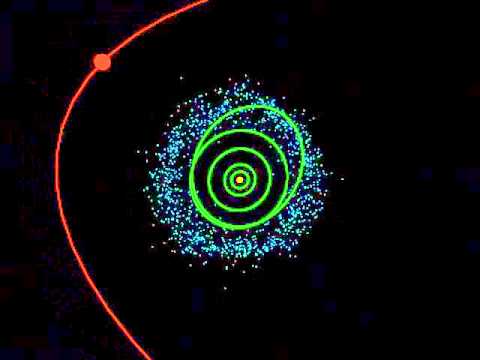Here is an interesting history of this object and what astronomers have been able to measure up to this point:
From the start, Sedna was an odd-ball. Its 11,400 year orbit takes it from a perihelion of 76 astronomical units (for context, Neptune is an average of 30 AUs from the Sun) to an amazing 936 AUs from the Sun. (A thousand AUs is 1.6% of a light year, and 0.4% of the way to Proxima Centauri, the closest star to our solar system). Currently at a distance of 86 AU and headed towards perihelion in 2076, we’re lucky we caught Sedna as it ‘neared’ (we use the term ‘near’ loosely in this case!) the Sun.
But this strange path makes you wonder what else is out there, and how Sedna wound up in such an eccentric orbit.
If researchers in the study are correct, Sedna may have lots of company, with perhaps 930 planetesimals predicted in the ‘Sednito region’ of the solar system from 50 to 1,000 AUs and 430 more additional planetesimals littering the inner Oort cloud from the same early event.
Some of the more out there theories talk about alien civilizations and other mysterious phenomena that are pulling the orbit of Sedna. Others think it is dark matter (which seems to be the answer for everything that doesn’t make sense in astronomy). 😉
thanks to universetoday.com for the great info
